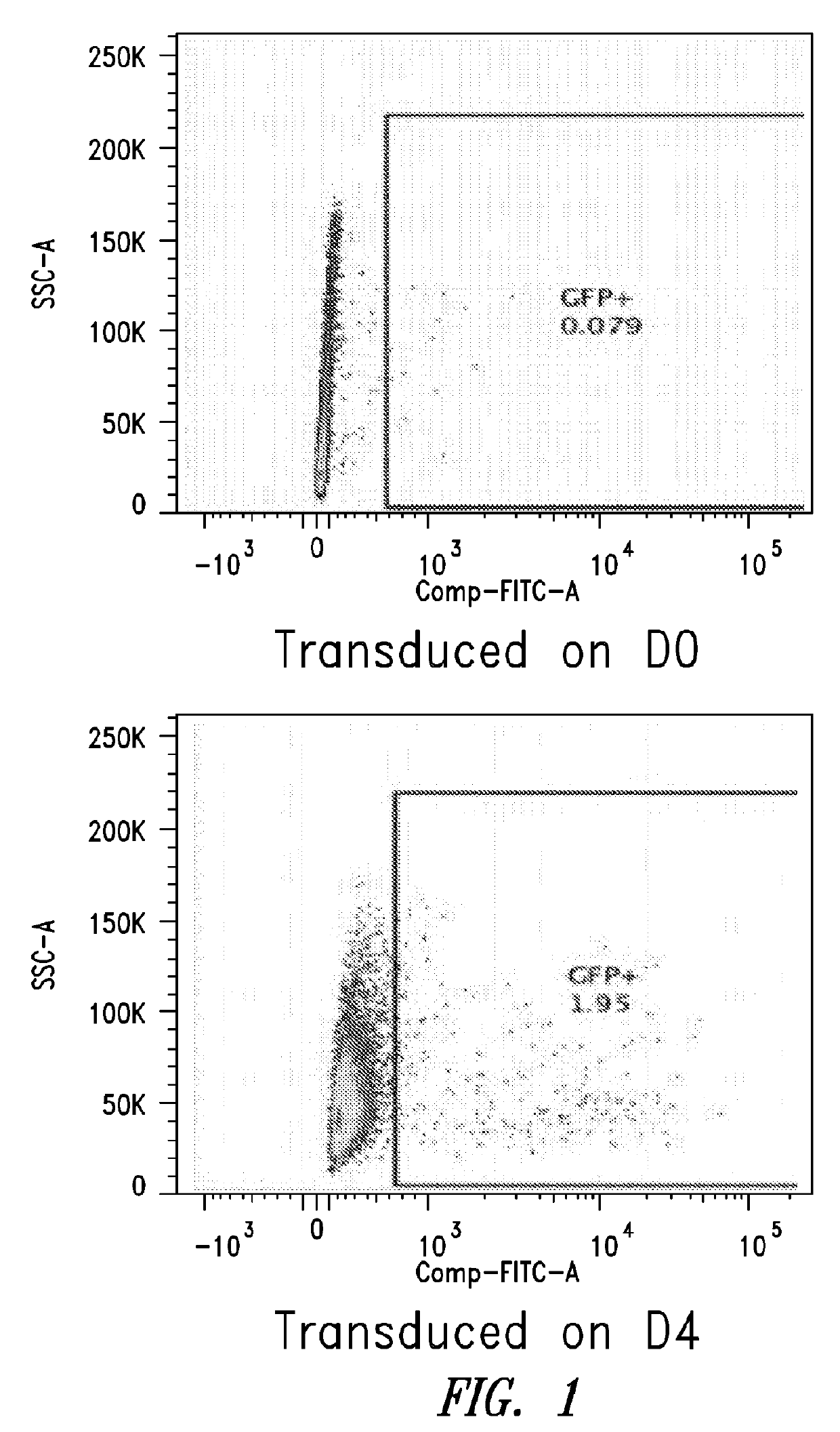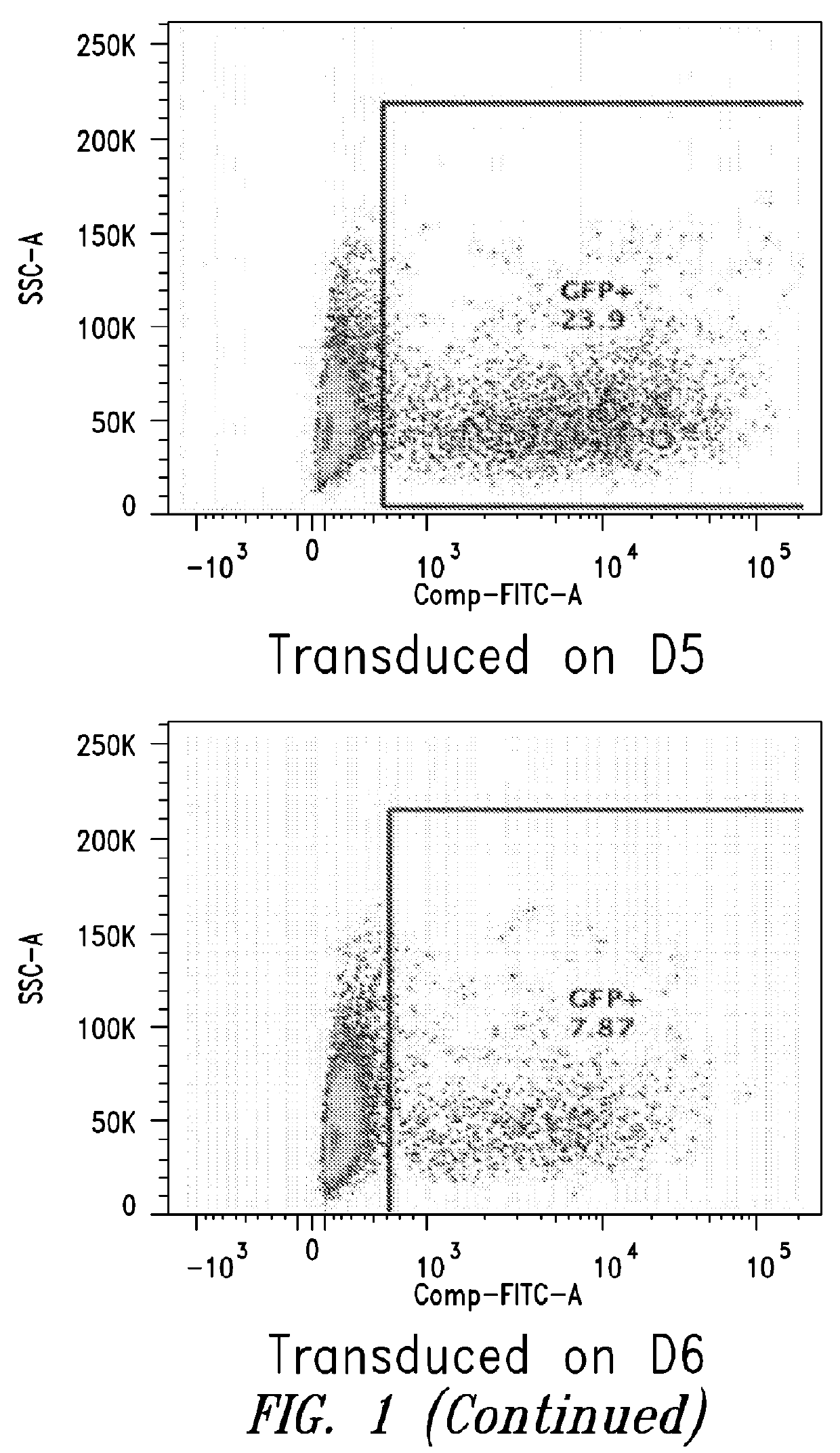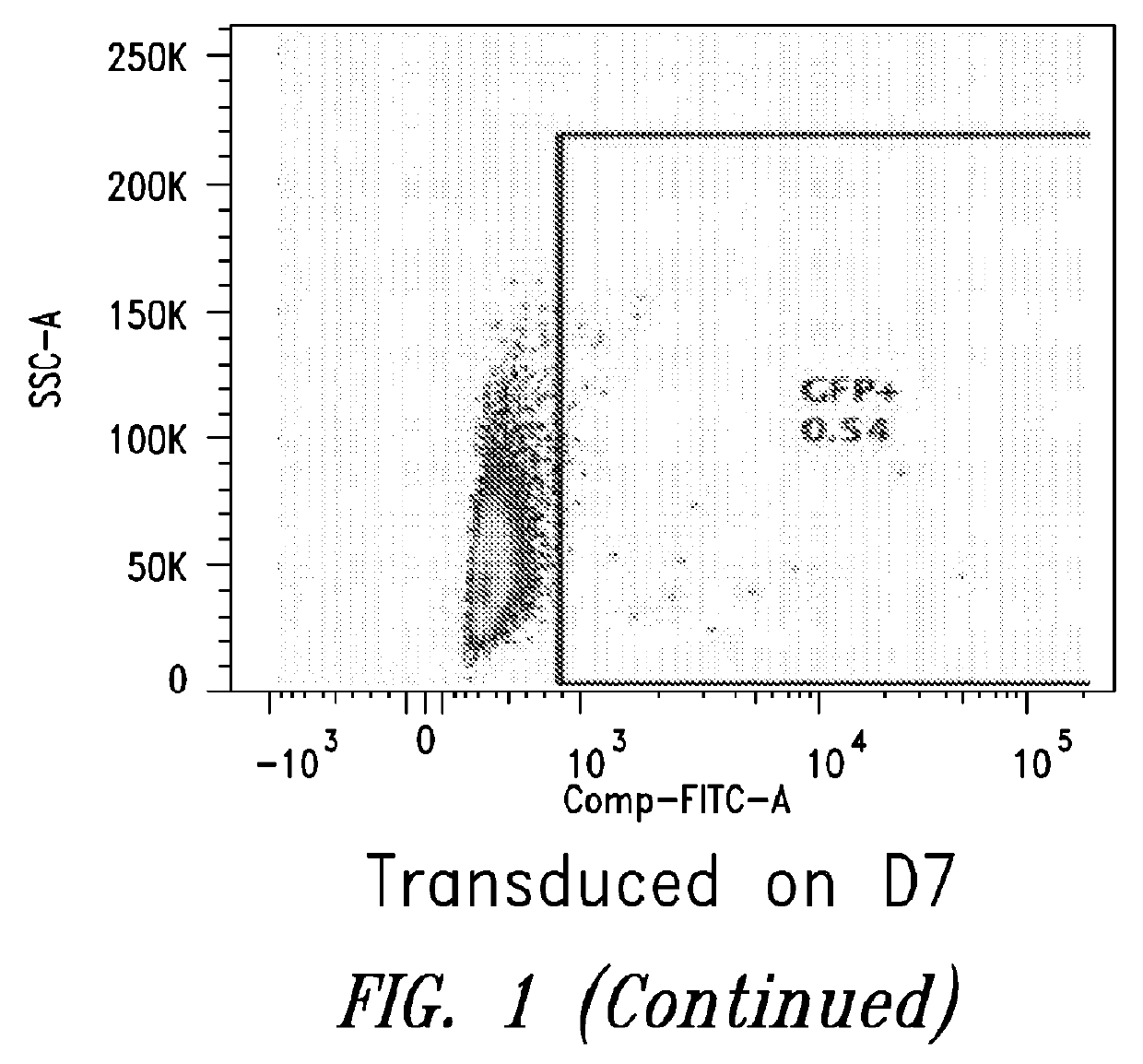Methods for in vitro memory b cell differentiation and transduction with vsv-g pseudotyped viral vectors
a technology of pseudotyped viral vectors and in vitro memory b cells, which is applied in the field of in vitro memory b cell differentiation and transduction with pseudotyped viral vectors, can solve the problems of difficult introduction of genes using retroviral vectors exhibiting low infectivity against such non-dividing cells, activated and dividing b cells are also not easily genetically modified, etc., to achieve high density, promote differentiation and activation, and high level
- Summary
- Abstract
- Description
- Claims
- Application Information
AI Technical Summary
Benefits of technology
Problems solved by technology
Method used
Image
Examples
example 1
In Vitro Memory B Cell Differentiation and Transduction with VSV-G Pseudotyped Lentivirus
[0099]This Example describes the in vitro differentiation of plasmablasts and plasma cells and transduction of same with VSV-G virus. The present methods demonstrate that after the 2nd phase of the culture system, about 20% transduction is observed as compared to only 5% using methods known in the art.
[0100](For the transduction: No spinnoculation, just add viral supernant with protamine sulfate and incubate for overnight, change medium)
[0101]Memory B cells were isolated using the memory B cell isolation protocol described below.[0102]1. D1: resuspend purified memory B cell into 1.5E5 / ml medium #1, supplemented with combination of cytokines, incubate for 3 days.[0103]2. D4: cells were harvested, washed with base medium, spin down at 300g for 8 mins, and resuspend cells in medium #2, supplemented with combination of cytokines.[0104]3. D6: Cells were collected and counted, resuspend cells at 1.5E6...
PUM
 Login to View More
Login to View More Abstract
Description
Claims
Application Information
 Login to View More
Login to View More - R&D Engineer
- R&D Manager
- IP Professional
- Industry Leading Data Capabilities
- Powerful AI technology
- Patent DNA Extraction
Browse by: Latest US Patents, China's latest patents, Technical Efficacy Thesaurus, Application Domain, Technology Topic, Popular Technical Reports.
© 2024 PatSnap. All rights reserved.Legal|Privacy policy|Modern Slavery Act Transparency Statement|Sitemap|About US| Contact US: help@patsnap.com










